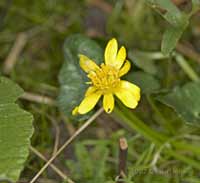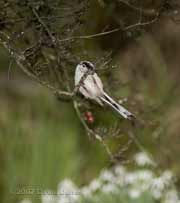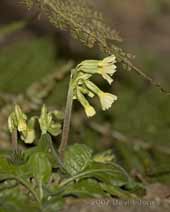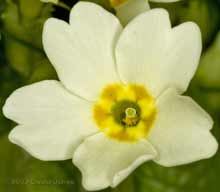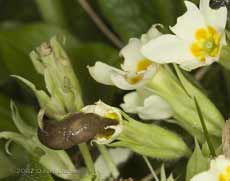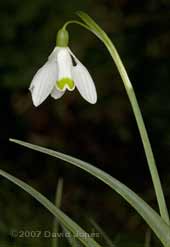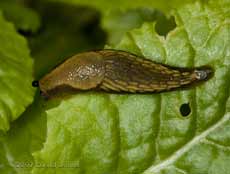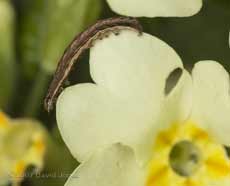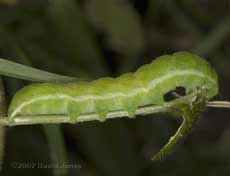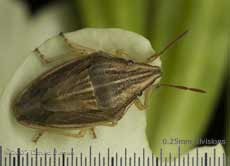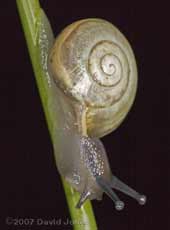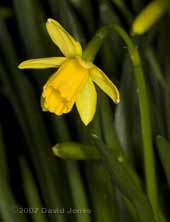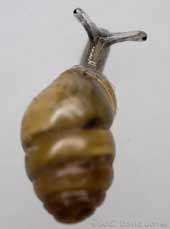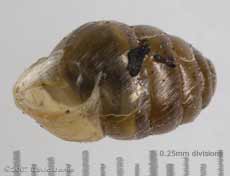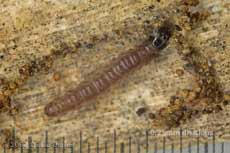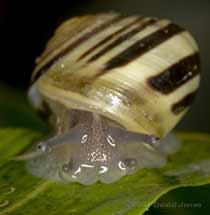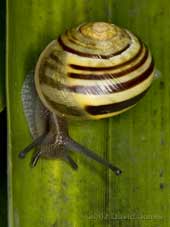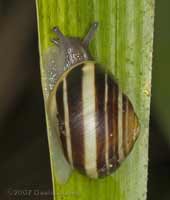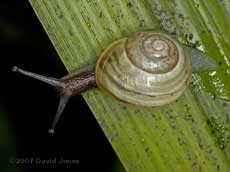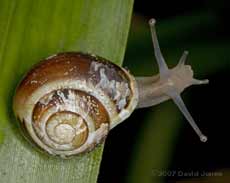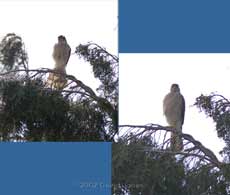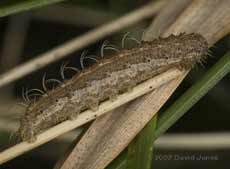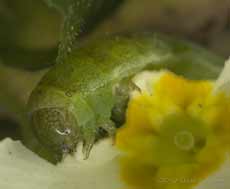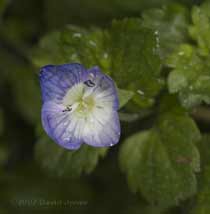Go to the last entry on this page .....Go to previous entry15 February - Another fine day, and, after it dipped to 1C during the night, a sunny afternoon helped the daytime temperature up to almost 10C. I spent part of the day finishing off the essential work on the caravan shelter roof and a bit of time doing some tidying up around the garden. In the middle of that task I found what has to be the first Lesser Celandine flower of the year, on the near side of the big pond, away from the main areas of Celandine foliage that are developing in the border. This is a month earlier than their usual flowering time - I cannot see any other flower buds forming on the Celandine plants. Also, the crocuses have been open today, just a few days earlier than last year, and I can see that some Cowslips/Oxlips have opened on the other side of the big pond.
A couple of Long-tailed Tits entertained me for a short while as I worked outside, and for the first time in weeks there were fresh hedgehog droppings in the garden. I shall have to watch out to see if the visitor is the small hedgehog I photographed back in January.
16 February - Mild again, with a high of nearly 11C during a bright middle of the day, although we did have just a few drops of rain in the early afternoon.
The Long-tailed Tits seem to be making more frequent visits to the garden at the moment - they came to feed again this morning. The twittering calls that they make is quite distinctive and a pleasant change to hear. I must try to record them if they really do become regulars.
Having consulted several wild flower books (again!) I'm now sure that the flowers that I mentioned yesterday are either Oxlips or hybrids, but not Cowslips. As yet, there is no sign of flower buds on any of the Cowslips in the garden. The large photographs include one of a flower that I have sliced through vertically in an effort to aid its identification.
While the Oxlip is growing unhindered, elsewhere in the garden the Primroses are having a more difficult time. Out of several dozen flowers open at the moment, this is the only unblemished example.
The rest of the Primroses have fallen victim to the slugs, with leaves, flowers and even unopened buds being munched. It is going to take an army of hedgehogs (or at least, a family of them!) to deal with the numbers of slugs here at the moment.
Even the Snowdrops that have appeared around the big pond can fall victim to the little horrors.
18 February - On a dull, overcast morning we are seeing the first nest-building of the year at mybitoftheplanet. This morning, the Robins have moved into the nestbox behind the Ivy tree, and the female is busy bringing leaves in as I write this. The image from the cctv camera is very poor as much of the view is obstructed by leaves, and the light levels have been kept very low up to now. I hope to improve the lighting a bit later today (without going near the box, I hasten to add!) - a job put off until I can organise a timer switch so that the light is only on during daylight hours. The Robins' progress will be followed in the nestbox diary. We have spent much of today painting the walls and ceiling in our lounge with their first coat after the walls were given a coat of plaster last week. At last it looks as though we are making progress. Mind you, watching 'Nestbox TV' was a good excuse for coffee breaks! During those breaks, I saw Long-tailed Tits here on two occasions, so they have really joined the regulars for the moment.
In my last entry, I blamed the slugs for all the damage to the Primroses. While slugs like this one are much in evidence, they are not the only culprits.
Tonight they are sharing the feast with numerous small brown caterpillars,
While I spotted this much larger caterpillar devouring a leaf of a White Dead-nettle.
19 February - The temperatures remain quite mild, with a low last night of over 6C and a high of just under 10C today, and it's staying dry at the moment. We were painting again today so I only spent a bit of time watching the garden. One thing I did notice this morning was more Chaffinch activity at the far end of the garden (for some reason they rarely come to the area around the feeders), with several males and females involved. There was a brief aerial encounter between two males over the Birch tree.
It is a Bishop's Mitre Bug (Aelia acuminata), a bug that I have seen just once before here, on 19 October last year. That one was found on the Blue Tit Nestbox door, just about eight feet away from the Primrose.
I have been looking in my copy of 'Shieldbugs of Surrey' and that doesn't show any records of the bug being seen before March. However, adults do over-winter, with the latest sightings being in October, making me wonder if this could be the same individual that I photographed back in October, and which has been drawn out of hibernation by the mild conditions. Their normal habitat is grasslands, but we have very little grass here these days as mosses take over!
21 February - After a dull day yesterday, with drizzle and rain, this morning is starting with sunshine - at .7.50am the temperature outside is 8C. Much of yesterday was taken up bringing some sense of normality back to our lounge. Much still needs to be done, but as we have to wait until the middle of March before we can put a final coat of paint on the walls, we have removed all the covers, masking tape etc. so that we can have a desperately needed break from the task.
Having talked about the slugs munching on the Primroses (and other plants), I should also mention the snails. Down at 'Primrose level' there seem to be very few snails making themselves obvious on the plants. This one, on a Rush (inappropriate word in the context of a snail!) by the side of the big pond, was the only example I could find last night. Is it a very pale White lipped Snail (Cepaea hortensis)?
I made a worrying discovery this afternoon. Our Ivy tree has taken on a definite list towards the West Wing. It seems that the old conifer that forms the skeleton of it has finally succumbed to decay. The robin box is under the West Wing side of it, and it is very likely that the Blackbirds will nest at least once during the Spring, so this development is definitely not welcome right now. The most immediate need is to stabilise it until the nesting season is over. As a first stage I have managed to get a rope around it and used a ratchet winch to pull the tree back just a little bit. Tomorrow (weather permitting) I will do the same on the other side, hopefully without causing too much disturbance to the Robin. The trouble is that if I do not do this then any strong winds could bring the whole thing down! Once Summer is here, rather than lose the structure, we will probably reduce the height of the Ivy and then use some scaffold poles to create a framework around the remnants of the trunk.
On a brighter note, the first of our daffodils has opened today. Not a wild species, but a miniature variety that was being sold off cheaply by our local garden centre last Spring and which fits better into our garden than the larger types. This is one of a group that grow next to the water butt.
Today has been the sunniest for a while, helping the temperature to reach over 11C this afternoon! 22 February - After yesterday's sunshine, today was dull and wet - how disappointing. I'm afraid I decided to postpone the work on the Ivy tree, partly because of the wet conditions, but also because I was feeling very tired today. I did spend a bit of time looking through some of the decaying bamboo leaves (brought indoors) and took a few photographs.
The small Vertigo(?) snails were out and about on the damp leaves, and I took a close look at one at a higher magnification. This example has a shell approximately 3mm long. We usually think about snails moving slowly, but trying to keep up with this one as it moved about on the mechanical stage that I was using was difficult.
Today I was able to get some photographs of the edge or peristome of the shell aperture . This is important in the identification of these small snails, as some of them have large defensive 'teeth' behind which the snail can retreat, although they only form in the adults. In this case there are no large teeth, but a small tooth, seen as a small ridge in the middle of the parietal region (the part of the opening bounded by the previous whorl of the shell - on the right of the opening in this photograph). That characteristic suggests that the snail could well be a Chrysalis Snail (Lauria cylindracea), still a member of the family Vertiginidae, but not a Vertigo species after all. These snails have shells of up to 4mm, so I need to confirm that there are larger individuals amongst the bamboo leaves.
Measuring about 4.5mm in length, it had set up a 'home' on the leaf, surrounded by what I assume are its own droppings, held together by silk to form a barrier. Although it was hidden by other leaves, the arrangement didn't seem to bond two leaves together, something often done by larvae. Look carefully at the image and you will see that the area within this 'wall' is blurred in comparison with the leaf surface outside - it appears to be a slight depression in the leaf that is out of focus, or is it a layer of fine silk? Unfortunately, I made the mistake of returning the leaf to the plants outside before I thought of investigating it further. The larva's location suggests that it does feed on the decaying leaves - I can only guess at this possibility, although there were holes in the leaf just outside the area.
23 February - Still cloudy this morning, but dry (so far) and a lot brighter than yesterday - the sun did peep through for a short time around breakfast time. The temperature is 9C at 11am. After writing about those small snails last night I thought it only fair to mention the snails that regard the large Bamboo in front of my workshop shed as their domain.
It is very rare to find one on the plants around the bamboo. Instead they seem to spend all their time gliding along the leaves. I do not see any leaf damage as a result, so I wonder of they are grazing on algal or even fungal coatings on the leaves, which develop as a consequence of the constant deposits of aphid honeydew. Viewed from this direction, the banding most recently formed looks almost like a barcode.
That pattern of brown lines on a pale yellow background is pretty consistent on most of the snails I see, although the yellow is more pronounced on some.
Even when the dark stripes are thicker it is still possible to make out the same sequence of thick and thin bands.
In this case the whole shell is very pale, but nevertheless the pattern still shows through.
Last night, there was only one snail that I could find that seemed to break the rules, with the dark bans merging together. This individual's shell measured just over 2cm across, with a height of about 16mm, the dimensions of a fully grown White-lipped Snail, and its surface was quite badly pitted. I took the photograph as it stretched out in an attempt to take a 'short-cut' across to an adjacent leaf.
24 February - a bright and breezy morning after a dull start, and at noon the temperature is just over 9C.
However, I did grab this pair of not so good images of her on the swaying top of a conifer, and they show her perched on one leg, holding her right leg up high against her body. I hope she hasn't been injured. I shall have to watch carefully when she next visits the garden.
Yesterday afternoon I put a second rope around the Ivy tree, and this afternoon I will probably secure it before using the ratchet winch to pull the first rope tighter. It will be a case of moving around carefully as I will be on the same side of the tree as the Robins' nest, although at least 5ft away. There was activity in the box this morning so I'm optimistic that the female will tolerate my presence. The local forecast suggests higher winds in a few days time so I need to secure the Ivy before they arrive.
27 February - After a dry day yesterday, today is dull, although it is dry at noon after a damp start to the morning. Since those last pictures of the Sparrowhawk I haven't seen her since to check on the leg. As far as the other birds go, it seems quite quiet in the garden at present, with no unusual winter visitors to report on this month, not even a Song Thrush or Blackcap. At least the Goldfinches and the Coal Tits continue to visit. Yesterday I saw the female Blackbird peeling bark off the Birch tree, something that I haven't observed previously. Unfortunately I didn't she where she headed with it - I shall have to watch out for signs that she is taking moss from the side of the pond.
As well as the ones that I've already reported on, I spotted this caterpillar, the third type that I've seen this month. Measuring just over 11mm in length it was on grass next to the pond.
Just a short way from it, on a primrose was another of the larger, green caterpillars, munching its way around the flower.
I had some long lengths of timber delivered today and I have fixed them on the roof of the caravan shelter. They will prevent the roof tarpaulin from flapping too much in high winds (they replace ropes that were used previously. Indoors, we have started installing wooden Venetian blinds on most of our windows. They look great, and should help to further reduce heat loss through the windows even with them being double glazed.
28 February - The month is coming to an end with a bang! After a windy night, today we have had bright spells punctuated by squally showers, and more heavy rain is forecast for tonight. Today I turned my attention to an urgent job outside. With the nesting season starting I wanted to ensure that the Swift boxes are going to be available for Swifts instead of the Starlings that nested in them last year, and have continued to roost in them. Before evicting the Starlings I needed to provide them with alternative homes, so I have now made a double Starling nestbox. The sudden arrival of heavy showers meant that the job was rather stop-start in nature. I was just giving it a coat of paint (to match the walls of our house) when we were hit (literally!) by a hail storm, complete with a lighting flash and very loud thunder. Even though I was working under the shelter of our veranda the hail bounced everywhere - I suppose I should have looked to see how the frogs reacted to it. Weather permitting (It looks promising) I shall put the box up tomorrow morning.
During the afternoon I spotted this small blue flower that has come into bloom by the side of the garden path. It is one of the Speedwells, possibly Veronica persica (Common Field Sreedwell, or Persian Speedwell). This is a 'new' flower for my diary and I don't recall ever seeing them here before. They are an introduced species
Click on images to see larger versions |
|
